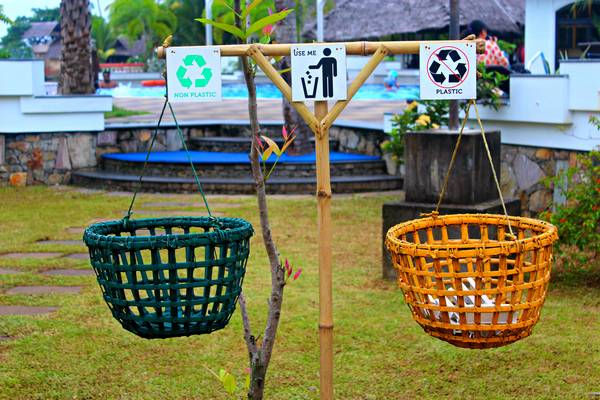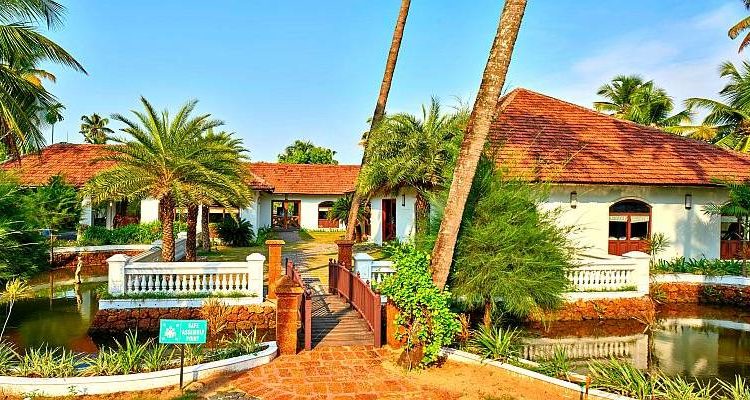By Rutaksha Rawat
Nestled between sandy beaches and serene backwaters, the Club Mahindra Cherai Resort, with its slew of sustainable practices streamlined into the resort’s everyday activities, has made green tourism a norm than an exception
Visit ORGANIC SHOP by Pure & Eco India
Operations at the Club Mahindra Cherai are governed by the tenet that excellent amenities for guests and sustainable tourism can go hand in hand. The cynosure of the resort’s (and indeed Club Mahindra’s) sustainability strategy is the conservation of natural resources. Almost all of the resort’s policies have been developed with an eye towards the prevention of pollution of air, land and water, as well as, conservation of biodiversity and cultural heritage of the locality. Right from optimal usage of water to adequate waste management, a myriad sustainability practices have been carefully integrated in the day-to-day operations at the Cherai property (and many of Mahindra’s other properties as well).

Cherai is a picture perfect historical town in the southern state of Kerala. The town with its palm fringed backwaters and azure seas offer the perfect destination for a rejuvenating holiday. The natural attractions of Cherai are enhanced by Club Mahindra’s amenities. Spread over six acres, the resort boasts exquisite flora, a large pond with quaint bridges and fountains and 48 spacious rooms—a mix of studio and single-bed apartments and hotel suites. The resort is equipped with all the modern facilities that a traveller seeks.

Operating amidst nature’s bounty comes with a huge responsibility of maintaining the delicate ecological balance. Mahindra Holidays that promotes the Club Mahindra resorts takes this responsibility seriously and makes environmental sustainability a part of its business strategy.
Sewage Treatment Plant
As disposal of sewage is water-intensive, the resort has installed a sewage treatment plant that aids in recycling waste water.
The Moving Bed Biofilm Reactor (MBBR) used at the resort employs modern technology to treat waste water in a cost effective and efficient manner. Countless polyethylene biofilm carriers are circulated in the aeration tank. The carriers facilitate the growth of bacteria that break down the waste. This system requires less space and can be scaled up easily when the sewage load increases. The treated water is used for watering the plants in the vast, beautifully landscaped resort. Dried sludge is used as manure.

Biogas Plant
How waste is managed depends on the type of waste, as is kitchen waste. On the Cherai resort premises, a biogas plant has been installed, that digests the resort’s kitchen and food waste and produces gas.
The biogas plant is a floating drum type with an underground digester and a floating gas drum. Since kitchen waste is generated daily, the plant works on a continuous-feed operation method. The waste is mixed with water and the slurry is fed into the digester. The slurry produces gas after fermentation. The gas thus generated is used as cooking fuel in the staff cafeteria. The remaining waste is dried and used as garden manure.
The plant helps not only in sustainable management of kitchen waste, but provides non polluting and renewable energy in a sustained manner.
Non CFC VRF Air Conditioning System
Although the Cherai cottages are designed for natural ventilation, air conditioners have been provided as per tourism industry norms. However, by opting for a Variable Refrigerant Flow (VRF) system, the management has ensured reduced energy usage. The system has inbuilt devices to allow the motor to operate at varying speed and thus circulate refrigerant only as per need. This feature and the internal heat recovery system conserves energy up to 55 percent compared to other air conditioning systems.
The VRF system uses non CFC R410A refrigerant, a certified environment friendly fluid, as it does not have an adverse effect on the ozone layer.
Other Energy & Water Saving Initiatives
Besides the above, all the activities at the resort are aimed at conserving energy and natural resources. Energy efficient CFLs, sensor taps, motion detector flush systems, battery operated vehicles, solar heaters, door sensor, etc, are just some of the systems installed within the resort to ensure optimum use and conservation of water and energy.
Besides implementing these green practices, Club Mahindra Cherai also sensitises local communities about the need to conserve natural resources and the importance of green practices. Furthermore, the team at Cherai works closely with the Kerala Forest Department to organise tree plantation drives within the resort and in the neighbourhoods. So far, the resort has enabled the planting of 1,500 mangrove plants—known for their coastal protection abilities— in the Cherai backwaters.
Green practices are not limited to Club Mahindra Cherai, but extend to all the 45 resorts of Mahindra Holidays located in offbeat and exotic locations across India and abroad.

In all its resorts, Mahindra Holidays has taken numerous initiatives towards energy conservation, use of renewable energy sources, optimal fuel consumption, solid waste management, green cover maintenance, optimal water usage, waste water recycling and rain water harvesting. While these initiatives have been recognised in all their resorts, 14 have made it to the Global Reporting Initiative (GRI) report this year. Tree plantation and ‘No Plastic’ campaigns are implemented in all the resorts. The Club Mahindra team in all its properties, encourages members and guests alike to plant saplings on the premises; and regularly update patrons on the growth of the trees planted—an initiative greatly appreciated and encouraged by guests.

- Conversion of kitchen waste to cooking fuel with biogas plant
- Recycling waste water with sewage treatment plant for gardening and converting sludge to manure
- Save up to 55% energy with air conditioners that use latest technological systems
- Energy efficient CFL lighting
- Solar water heaters and battery operated vehicles to conserve electrical energy
- Tree plantation drives for guests and communities
- ‘No Plastic’ campaigns
- Rain water harvesting
- Use of gadgets for optimal water and energy usage
This article was published in the April 2016 issue of Pure & Eco India



Leave a Reply